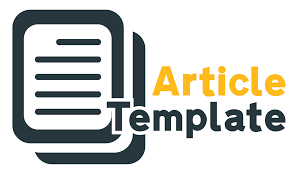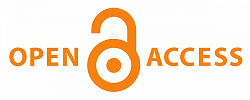Review of Analysis of the Implementation of Good Corporate Governance and Information Asymmetry And the Impact on Cost Capital
Keywords:
Good Corporate Governance, Information Asymmetry, Cost CapitalAbstract
In this research, explaining and explaining the implementation of Good Corporate Governance and Information Asymmetry that occurs and its impact on Cost Capital, the researcher conducted a theoretical study and previous literature review where the theory used was Agency Theory which concerns the occurrence of information asymmetry. Where the theory used will help in explaining the impact of implementing ood Corporate Governance and information asymmetry and making predictions on the size of capital costs that occur. This research will also examine previous research which provides an overview regarding the Implementation of Good Corporate Governance and Information Asymmetry that occurs and its impact on Cost Capital. This research uses a qualitative descriptive approach by conducting theoretical studies and literature reviews by conducting literature studies and collecting journals via websites and the internet. The research methodology used is purely through analysis of existing literature and theoretical studies related to the topics discussed in the research. Then the researcher conducts discussions and provides conclusions through theoretical analysis and research results that support obtaining good theoretical research results. related to the themes discussed in the research. Through the results of theoretical studies and literature reviews, the results were found with the conclusion that the implementation of Good Corporate Governance is able to provide structural supervision which will reduce the impact of agency costs so that Good Corporate Governance plays a role in minimizing the Cost of Capital in a company, information asymmetry which often occurs can increase the cost of capital which must be charged by the company.
References
Agoes, Sukrisno. (2013). Auditing Petunjuk Praktis pemeriksaan Akuntan oleh Akuntan Publik. Edisi 4 Buku 1. Jakarta: Salemba Empat.
Amihud, Y. dan Mendelson, H.1986. “Asset pricing and the bid-ask spread.” Journal of Financial Economics, Vol. 17, pp. 223–50.
Auruma S, Tyas & Sudana, I Made. (2013). Diversifikasi Investasi Saham: Risiko Total Portofolio Melalui Diversifikasi Domestik dan Internasional. Jurnal Manajemen Teori dan Terapan Tahun 6. No. 1, April 2013.
Bhojraj, S., and P. Sengupta. (2003). Effect of Corporate Governance on Bond Ratings and Yields: The Role of Institutional Investors and Outside Directors. Journal of Business, 76: 455-475.
Brigham, Eugene F, Joel F Houston, (2014), Dasar-Dasar Manajemen Keuangan, Edisi 11 Buku 1, Jakarta: Salemba Empat.
Boediono, G. S. (2005). Kualitas laba: Studi pengaruh mekanisme corporate governance dan dampak manajemen laba dengan menggunakan analisis jalur. Simposium Nasional Akuntansi VIII, 8(9), 172-194.
Kurniawati, E. (2019). PENGARUH KEPEMILIKAN MANAJERIAL, DEWAN DIREKSI, LEVERAGE, DAN UKURAN PERUSAHAAN TERHADAP MANAJEMEN LABA (Studi Empiris Pada Perusahaan Food And Beverage Yang Terdaftar Di Bursa EfekIndonesia 2014-2018) (Doctoral dissertation, UNIVERSITAS WIJAYA PUTRA).
Glosten, L. R., and Milgrom. (1985). Bid, Ask, and Trsansaction Prices In Specialist Market With Heterogeneously Informed Traders. Journal of financial Economics: Hal. 71-100.
Gultom, J. B., & Gunawan, I. D. (2020). Intellectual Capital Disclosure, Good Corporate Governance and Firm Performance: Asean Cross Country Analysis. European Journal of Business and Management Research, 5(5).
Hanafi, Mamduh M. dan Abdul Halim, (2014), Analisis Laporan Keuangan., Edisi tujuh., UPP AMP YKPN, Yogyakarta.
Jensen, M., C., dan W. Meckling, (1976). “Theory of the firm: Managerial behavior, agency cost and ownership structure”, Journal of Finance Economic 3:305- 360, di-download dari http://www.nhh.no/for/courses/spring/eco420/jensenmeckling-76.pdf
Jogiyanto. (2010) Teori Portofolio dan Analisis Investasi. BPFE. Yogyakarta
Kaen, Fred. R, (2003). A Blueprint for Corporate Governance : Strategy, Accountability, and the Preservation of Shareholder Value. USA : AMACOM.
Kaihatu, T. S. (2006). Good Corporate Governance dan Penerapannya di Indonesia. Jurnal Manajemen dan Kewirausahaan, Vol. 8, No.1 : 1-9, Maret.
Kusniawati, Heny, & Lahaya, Ibnu Abni. (2017). Pengaruh Partisipasi Anggaran, Penekanan Anggaran, Asimetri Informasi Terhadap Budgetary Slack pada SKPD Kota Samarinda. Fakultas Ekonomi Dan Bisnis Universitas Mulawarman Samarinda, Vol. 14(2), ISSN 2528.1135.
Komalasari (2000). "Informasi Asimetris dan Cost of Equity Capital." Simposium Nasional Akuntansi III: 907-930.
Komalasari, Puput Tri dan Zaki Baridwan. 2001. “Asimetri Informasi dan Cost of Equity Capital”. Simposium Nasional Akuntansi, Vol. 4, No. 1, h. 64-81.
Kyle .(1985), “Asset Pricing under Asymmetric Information”, working paper series, 1985
Monks, Robert A.G, dan Minow, N., (2003). Corporate Governance. 3rd Edition, Blackwell Publishing.
Pratiwi, Ana, Nurkholis, and Abdul Ghofar. (2015). “Pengaruh Corporate Governance dan Struktur Kepemilikan Terhadap Asimetri Informasi”. Jurnal Akuntansi dan Auditing Indonesia (JAAI), Vol. 19 No. 2.
Prihanto, Hendi. (2018). Etika Bisnis & Profesi Sebuah Pencarian, Depok: Rajawali Pers
Putri, A. D., & Dewi, A. S. (2017). Pengaruh Good Corporate Governance dan Leverage Terhadap Kinerja Keuangan Pada Perbankan yang Terdaftar di BEI. Jurnal Reviu Akuntansi Dan Keuangan, 4(1), 1–14. https://doi.org/10.22219/jrak.v4i1.4931
Rahmah, A.A., & Kusumadewi, R. K. A. (2020). Pengaruh Karateristik Komite Audit Terhadap Biaya Modal Ekuitas. Diponegoro Journal of Accounting, 9(1), 1-12.
Rahmawati. (2006). “Pengaruh Asimetri Informasi terhadap Praktik Manajemen Laba pada Perusahaan Perbankan Publik yang terdaftar di Bursa Efek Jakarta”, Simposium Nasional Akuntansi IX
Richardson, V. J. (2000). Information asymmetry and earnings management: Some evidence. Review of quantitative finance and accounting, 15, 325-347.
Rustam, Bambang Rianto. (2017). Manajemen Risiko: Prinsip, Penerapan, dan Penelitian. Jakarta: Salemba Empat.
Salehi, H., Rezaie, H., & Ansari, F. (2014). Corporate governance and information asymmetry. Management Science Letters, 4(8), 1829-1836.
Saputri, F. Dini, (2009). “Pengaruh Corporate Governance Terhadap Manajemen Laba di Industri Perbankan Indonesia”, Skripsi, STIE Dharmaputra, Semarang.
Shaw, John.C.(2003). Corporate Governance And Risk: A System Approach, John Wiley & Sons,Inc,New Jersey.
Supriyono, R.A., (2000), Sistem Pengendalian Manajemen, Edisi 1, Buku 2, Yogyakarta : BPFE.
Susanto, S., & Siregar, S. V. (2012). Corporate governance, kualitas laba, dan biaya ekuitas, studi empiris perusahaan manufaktur di Bursa Efek Indonesia tahun 2009. Jurnal Keuangan dan Perbankan, 14(2).
Suwardjono. (20050. Teori Akuntansi: Perekayasaan Pelaporan Keuangan. Yogjakarta: BPFE.
Ujiyantho, Moh. Arief dan Bambang Agus P. (2007). “Mekanisme Corporate Governance, Manajemen Laba dan Kinerja Keuangan”,Simposium Nasional Akuntansi X.
Widiatmoko, J., Indarti, M. G. K., & Pamungkas, I. D. (2020). Corporate governance on intellectual capital disclosure and market capitalization. Cogent Business & Management, 7(1), 1750332.
William R Scott. (2009). Financial Accounting Theory. Fifth Edition. Pearson Prentice Hall: Toronto.
Downloads
Published
Issue
Section
License
Copyright (c) 2023 Maf'ul Taufik

This work is licensed under a Creative Commons Attribution-NonCommercial-ShareAlike 4.0 International License.








